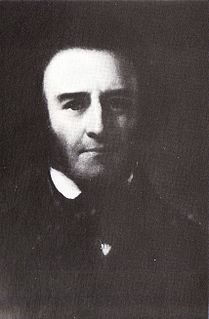Joseph Farey (1796–1829) was an English mechanical engineer and draughtsman. [1]
He was the third son of John Farey, Sr. (1766–1826) and Sophia Hubert (1770–1830) and was born at Potsgrove, Bedfordshire. He was the brother of John Farey, Jr.
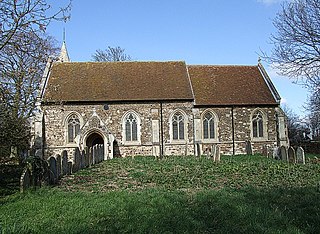
Potsgrove is a village and civil parish located in the Central Bedfordshire district of Bedfordshire, England. The parish includes the hamlet of Sheep Lane. It is in the civil parish of Milton Bryan.
Nothing is known of his education, but he was a talented draughtsman. He was part of the family business of assisting inventors in developing new machines and preparing patent specifications, and for publishers preparing descriptive texts and drawings. As well as technical and scientific periodicals he helped illustrate Rees's Cyclopædia (1802–1819), Smeaton's Reports , (1812), Pantologia (1808) and the British Encyclopedia, or Dictionary of Arts and Sciences 1808.
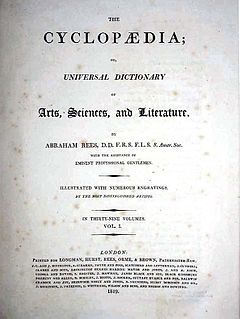
Rees's Cyclopædia, in full The Cyclopædia; or, Universal Dictionary of Arts, Sciences, and Literature was an important 19th-century British encyclopædia edited by Rev. Abraham Rees (1743–1825), a Presbyterian minister and scholar who had edited previous editions of Chambers's Cyclopædia.
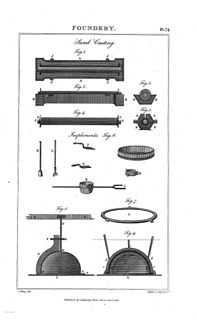
Pantologia is an English encyclopedia, published in 12 volumes, 8vo in 1813, with 370 plates. Its full title page was A New Cyclopedia, comprehending a complete series of Essays, Treatises and Systems, alphabetically arranged, with a general dictionary of Arts, Sciences and Words: the whole representing a distinct Survey of Human Genius, Learning and Industry, illustrated with elegant engravings; those on Natural History being from original drawings by Edwards and others, and beautifully coloured after nature ...
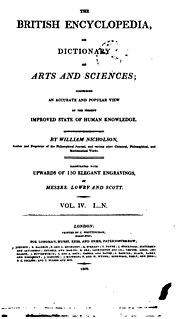
The British Encyclopedia, or Dictionary of Arts and Sciences, claimed by its publishers to be a work "Comprising an accurate and popular view of the present improved state of human knowledge", was published at London in 1809 in six octavo volumes and around 150 plates.
He became a member of the Institution of Civil Engineers in 1822, and in July 1825 became paralysed from an infected minor flesh wound. In that year he took out a patent for an oil lamp (Woodcroft No 5214). He died in 1829 in Paris.

The Institution of Civil Engineers (ICE) is an independent professional association for civil engineers and a charitable body in the United Kingdom. Based in London, ICE has over 92,000 members, of whom three quarters are located in the UK, while the rest are located in more than 150 other countries. The ICE aims to support the civil engineering profession by offering professional qualification, promoting education, maintaining professional ethics, and liaising with industry, academia and government. Under its commercial arm, it delivers training, recruitment, publishing and contract services. As a professional body, ICE aims to support and promote professional learning, managing professional ethics and safeguarding the status of engineers, and representing the interests of the profession in dealings with government, etc. It sets standards for membership of the body; works with industry and academia to progress engineering standards and advises on education and training curricula.




